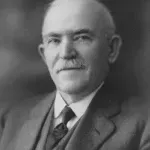The Story of Marcus Brown
When a married couple volunteered to help clean up a state park in 2015, they had no idea what they would discover—or rather uncover.
Niagara University is located “atop the rugged, water-carved Niagara River gorge,” “just four miles north of the world-famous waterfalls” in Niagara Falls, NY. The 160-acre main campus provides stunning views of the Niagara River gorge and the Province of Ontario, Canada.
Niagara University was founded by the Vincentian community in 1856. The Vincentian fathers originally established their school in neighboring Buffalo, NY, turning a vacant orphan home for boys into the College and Seminary of Our Lady of Angels.
Soon, the Vincentian fathers relocated the school to Niagara Falls, NY, known then as Suspension Bridge Village. They purchased several hundred acres of farmland on Monteagle Ridge from two prominent white families. The land originally belonged to the Seneca and Tuscarora Nations. That fall, enrollment at the school increased from 6 to 24 students and to 80 students the following year. By its 25th anniversary in 1881, the school graduated hundreds of students, including 300 priests and hundreds more in other fields.
Despite these successes, the school almost closed a year later. When Father Patrick Vincent, ‘PV,’ Kavanagh became president of the seminary in 1878, he inherited a debt of $60,000 and several repair and restoration projects—including an unfinished chapel. As such, he and his treasurer, Michael, ‘Father Mike’, Cavanaugh decided to pay only interest payments on the school’s loans. Sometimes they couldn’t even do that. “One group of [frustrated] creditors […] demanded immediate and full repayment of a three thousand dollar loan.”
“In December 1882, the sheriff of Niagara County informed the seminary’s leaders that unless the loan could be repaid in full, the seminary’s property would be subject to immediate foreclosure.” That’s when Father Mike decided to ask his friend Marcus Brown for an emergency loan. Brown was a Jewish man, born in Poland in 1854 and living in Suspension Bridge Village in 1863. By 1882, he owned a clothing store in the village. Brown “was known to the seminary’s faculty as a fair-minded merchant and civic volunteer, and to students as a clothier who sold high-quality products at reasonable prices.”
On a cold December night, Father Mike walked three miles in deep snow to Brown’s home in Suspension Bridge Village. “Brown quickly agreed to lend the seminary $3,000 in cash without interest.” He even promised to personally deliver the money to the sheriff the next morning before the property went up for sale. Brown kept his word and walked three miles through knee-deep snow to save the school from foreclosure.
Six months later, it officially became Niagara University. A year after that, the seminary repaid the loan in full. Brown still refused to accept any interest on it. In 1904, he left Suspension Bridge Village and moved to New York City “where he built a successful real estate business.” In 1971, Niagara University unveiled a plaque in honor of Marcus Brown.
Today, Niagara University has more than 4,200 students enrolled in its undergraduate and graduate programs. The private university holds fast to its Vincentian founding. St. Vincent de Paul was the “founder of the Vincentian Community and universal patron of charitable works.” Looking back at the story of Marcus Brown, he too was a patron of charitable works when he saved the school from foreclosure.
Hope L. Russell, Ph.D.


